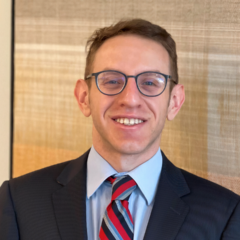By Jason Harary
 Last year, New York City Mayor Eric Adams announced a plan to involuntarily hospitalize people suffering from mental illness, even if they posed no risk of harm to others. This is a stark escalation from the existing law, which permits involuntary hospitalization only of individuals who appear to pose a risk of serious harm to themselves or others. The new plan’s broader mandate relies on an interpretation of the law that includes people “who appear to be mentally ill and who display an inability to meet basic living needs, even when there is no recent dangerous act.”
Last year, New York City Mayor Eric Adams announced a plan to involuntarily hospitalize people suffering from mental illness, even if they posed no risk of harm to others. This is a stark escalation from the existing law, which permits involuntary hospitalization only of individuals who appear to pose a risk of serious harm to themselves or others. The new plan’s broader mandate relies on an interpretation of the law that includes people “who appear to be mentally ill and who display an inability to meet basic living needs, even when there is no recent dangerous act.”
The involuntary commitment plan likely violates the Americans with Disabilities Act, which prohibits discrimination on the basis of disability and requires entities, including the government, to provide reasonable accommodations to people with disabilities. The City’s new plan does precisely that—it allows police officers and first responders to detain individuals merely because they are mentally ill. Rather than providing accommodations to people with disabilities, it punishes them with detention. The plan is also potentially unconstitutional. Government seizures and uses of force against people by sole reason of their mental illness may violate the Fourth Amendment.
This plan does not just trample on the rights and dignity of people with mental illness, it also endangers them. This is because police officers will be the individuals implementing the policy, which will increase the amount of contact between police officers and people suffering from serious mental illness. Police officers are frequently ill-equipped to meet the needs of these individuals and will sometimes needlessly escalate situations they enter. People with mental illness are disproportionately victims of police violence.
In Montgomery County, Maryland, for example, a review by the City Council’s Office of Legislative Oversight revealed that mental illness was a key risk factor for uses of force by Montgomery County Police Department (MCPD) officers. In 2019, 30% of uses of force by MCPD officers involved suspected mental illness. The same review found that “police encounters with persons with mental illness too often end in tragedy.” The situation has not improved since then—in 2021, 48% of victims subject to use of force by the MCPD were suffering from mental illness at the time of the encounter. This was also on top of a 66% increase from 2020 in the raw number of use of force encounters involving mental illness.
Ryan LeRoux’s case tragically illustrates the consequences of defaulting to a police response. In this case, which attorneys at Brown, Goldstein, & Levy are currently litigating, MCPD responded to a 911 call about an individual in a car who would not leave the McDonald’s drive-thru lane. Ryan was a young Black man who suffered from schizophrenia and depression and was in the midst of a mental health crisis. MCPD took over an hour to respond. The first officer to respond saw Ryan sitting in the driver’s seat, reclined, looking at his phone. He also saw a gun (which Ryan legally owned) lying on the passenger seat. Rather than calling for specialized help, the officer drew his firearm and escalated the situation. Over 18 MCPD officers held Ryan at gunpoint for nearly 30 minutes. One of them joked that Ryan was “gonna end up offing himself.” Predictably, the officers on scene claim that Ryan reached for the gun in the passenger seat. Four officers shot him 23 times and killed him.
Alternatives do exist. Eugene, Oregon pioneered the Crisis Assistance Helping Out On The Street (“CAHOOTS”) model, in which city social workers, rather than police, respond to mental health-related calls. CAHOOTS was founded in 1989 and has grown to handle nearly 20% of 911 calls in the areas it covers. Members are unarmed, trained in de-escalation, wear casual clothes, and receive extensive de-escalation training. Medics also accompany crisis counselors on calls to meet urgent medical needs. In situations where there is a genuine threat, police officers may accompany CAHOOTS personnel.
Montgomery County, Maryland, is attempting to build out similar resources. The Department of Health and Human Services operates the Montgomery County Crisis Center. This facility provides crisis services in person and by phone 24 hours a day and seven days a week. It also manages a Mobile Crisis Team, composed of a licensed mental health professional and a second Crisis Center staff member. It provides crisis evaluation, crisis stabilization, recommendations for treatment and resources, and facilitates hospital psychiatric evaluations. Unfortunately, this resource is understaffed and underutilized. Another external review of 40 randomly selected MCPD mental health calls for service found that the Mobile Crisis Team was only involved in three instances.
A federal district court judge recently denied Montgomery County’s motion to dismiss, and the lawsuit filed by Ryan’s family proceeds. Ryan’s family is demanding changes to MCPD response that they hope will prevent similar future tragedies. Local activities such as the Silver Spring Justice Coalition are working tirelessly to reduce police presence and build alternative responses.
Despite such initiatives, the false premise that mentally ill people are dangerous continues to pervade public consciousness. This rhetoric has chilling consequences for people living with mental illness, which the recent murder of Jordan Neely illustrates all too well. Like Ryan, Jordan was a young Black man in the throes of a mental health crisis at the time of his death. He was behaving erratically on the New York City subway, shouting at passengers that he was hungry, thirsty, and had little to live for. In response, Daniel Penny, a white U.S. Marine veteran also on board the train, forced Jordan to the floor in a fatal chokehold for 15 minutes. When the default government response to mental illness is violence, it is not surprising when others follow suit.
Brown, Goldstein & Levy has deep experience litigating police misconduct cases and disability rights cases. Examples of BGL’s expertise at the intersection of police misconduct law and disability rights law, in addition to Ryan LeRoux, include the cases of Eric Sopp (for whose family we recovered $6.5 million), Ethan Saylor (for whose family we recovered $1.9 million, along with a new law requiring better training), and the Gary Montgomery case (involving a District of Columbia man from whom police coerced a murder confession while he suffered a schizophrenic crisis). If you or a person you know has been the victim of the use of excessive force by police or other police misconduct, we may be able to help. Contact Jason Harary today to discuss your situation.
